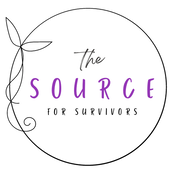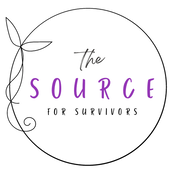|
By Christine Murray
The Pathways for Supporting Survivors Model offers a guiding framework that empowers individuals on their journey to recovery from abuse. This blog post introduces the application of this model to survivors who are on the journey of healing and recovering from past abuse. You can learn more about the overall model as it applies to both survivors and community supports for survivors here. In addition, the terminology of “Triumphing Over Abuse” draws upon my and my colleagues’ long-term research and social media work on the See the Triumph campaign, which I invite you to learn more about at www.seethetriumph.org. The Pathway for Survivors comprises six commitments, each playing a crucial role in empowering survivors on their unique journey. Let's explore each commitment and its significance in the healing process. As a reminder, the 6 commitments aren't intended to be interpreted as sequential steps that occur in a prescribed order. Instead, each commitment is typically ongoing, occurring simultaneously and evolving over the course of time. Understanding the Pathway for Survivors Here’s a quick snapshot of the Pathway for Survivors: The Pathway for Survivors: 6 Commitments for Triumphing Over Abuse
A Deeper Introduction to Each of the 6 Commitments for Survivors Below, you’ll find some additional, introductory information about each commitment. Over time, The Source for Survivors Blog on the Pathway for Survivors will share a lot more information about each Commitment as well! Commitment 1: Committing to being intentional with each step of your recovery journey. While time alone may heal some wounds, the most effective approach to healing and recovering from past abuse for many survivors can be found in an intentional healing process. By committing to being intentional, you can adopt a hope-filled stance (even on days when hope may be hard to find) that a better life is possible. When you adopt a commitment to being intentional, you also can remind and affirm for yourself that healing is possible, even if you can’t see where the full journey ahead will take you. Commitment 2: Committing to making your safety a top priority in all aspects of your life. You deserve to be and to feel physically and emotionally safe in all areas of life. If you are a survivor who still faces a threat of harm from your abuser, it can be helpful to build a safety plan with the support of a trained professional. Other ways you can promote your emotional safety during your healing process include (1) building your coping strategies, (2) moving at a pace that is comfortable for you, and (3) taking good care of yourself through ongoing self-care. Commitment 3: Committing to adopting a long-range perspective for your healing and growth. Healing from abuse can take time. Practice patience while you go through the process. Celebrate your short-term successes, while also keeping your long-term growth and healing in mind. Know that your experiences with the trauma of abuse may continue to impact you throughout your life, but this doesn’t mean that there is anything wrong with you or that you are damaged. You’re simply human, and you’ve lived through a harrowing, traumatic experience. No matter how far in the future new challenges may arise, know that you can continue to reach new levels of growth and healing throughout your lifetime. Commitment 4: Committing to taking deliberate steps forward, no matter how small, in the path to recovery. At times, it may feel overwhelming to think about all of the areas of your life in which abuse has impacted you. Keep in mind that you don’t have to work on every single area of life at once. Starting with where you are right now, look at different areas of healing that you’d like to work toward, and begin to develop tactical, practical strategies for taking action in those areas - perhaps even starting with just one area at a time! It’s wise to prioritize and keep in mind that you don’t need to address every single area of life at once. The steps you may take could include seeking professional support, searching for learning opportunities, and mapping out goals for changing your habits. Don’t forget here that rest is an important part of your “action plan” as well! Commitment 5: Committing to regular reflection as a way to understand and celebrate your progress. Some of the steps you’ll take as you work on your healing from past abuse will have amazing results! They will help you grow, overcome limiting beliefs, connect with social support, and/or feel stronger. However, there will be other steps you’ll attempt that don’t feel like they help you very much, and sometimes you may even feel like they set you back. All of this is part of the complicated journey of recovering from past abuse. Because this journey can be so complex, it is wise to put mechanisms in place to help you make time for regular reflection so you can figure out what is working well, what you may want to modify, and what you may want to stop doing altogether. Self-reflection (often aided by trusted people in your support network as well) is a valuable tool along the pathway of recovering from past abuse. Commitment 6: Committing to giving back and supporting others who are also on a journey to recovery (but only if you want to!). This commitment is always entirely optional for survivors. You’re under no obligation to become an advocate, volunteer, community speaker, or any other sort of helper for others who have faced abuse, just because you’ve had that experience yourself. However, many survivors of past abuse find that helping others is a strong desire that may help them make meaning of their experiences. If and when you decide that helping others affected by abuse is something that you’d like to do, there are many ways to do this. This could include getting involved in local advocacy efforts, helping to raise awareness about the dynamics of abuse in your community or online, sharing your story with others, or simply being there for a friend who is facing similar experiences. Conclusion Just as no two stories are alike, neither are the paths to healing. The six commitments we've explored may resonate with you in different ways and at different times. Take a moment to reflect on how these commitments align with your personal journey, and consider how they might shape your path ahead. Stay tuned for upcoming blog posts that delve deeper into each commitment, offering more tools for your empowering journey.
0 Comments
|
Categories
All
Archives
July 2024
|
© The Source for Survivors. Unauthorized use and/or duplication of any material found at this web-site and blog without express and written permission from this site’s owner is strictly prohibited. Please note that The Source for Survivors is not a resource for providing personalized advice for any individual or organization, either through this website or any associated communication challenges that include but are not limited to social media, emails, or direct messages. The Source for Survivors also is not a crisis response resource. Please visit our Other Resource page for additional information, including 24/7 support resources related to domestic violence and mental health.



 RSS Feed
RSS Feed
